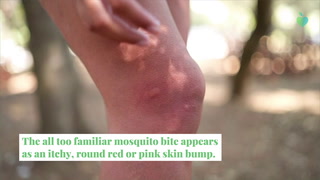Bald-faced hornets, known for their aggressive defense of nests, can deliver painful stings that pose health risks to humans. This article delves into the characteristics of bald-faced hornets, details the effects of their stings, provides treatment options, and offers prevention tips to avoid encounters.
Introduction to Bald-Faced Hornets
Bald-faced hornets Dolichovespula maculate are actually a type of wasp rather than a true hornet. They are found primarily in North America, typically building large, papery nests in trees, shrubs, or on buildings. These distinctive insects are black with white markings on their faces and abdomens, and they are known for their aggressive behavior when defending their nests.
Characteristics of Bald-Faced Hornet Stings
1. Venom Composition: Like other stinging insects, bald-faced hornets inject venom through their stingers when they feel threatened. The venom is a cocktail of toxic proteins that can cause pain, swelling, and allergic reactions in susceptible individuals.
2. Sting Response: Bald-faced hornets release alarm pheromones when they sting, signaling nearby colony members to defend the nest. This can lead to multiple stings if a person inadvertently disturbs a nest.
3. Severity of Stings: While painful and potentially dangerous, bald-faced hornet stings are generally less severe than those of some other stinging insects like honey bees or yellow jackets. However, individuals with allergies to insect stings may experience more serious reactions.
Symptoms of a Bald-Faced Hornet Sting
1. Immediate Pain and Redness: The initial sensation of a bald-faced hornet sting is sharp pain and localized redness at the sting site. Swelling may also occur within minutes.
2. Allergic Reactions: Some people may experience allergic reactions ranging from mild to severe. Symptoms can include swelling beyond the sting site, itching, hives, difficulty breathing, dizziness, and in rare cases, anaphylaxis—a life-threatening emergency requiring immediate medical attention.
Treatment for Bald-Faced Hornet Stings
1. Basic First Aid:
Remove Stinger: Use a flat object like a credit card to gently scrape off the stinger and venom sac from the skin. Avoid using tweezers, as squeezing the venom sac can release more venom.
2. Allergic Reactions:
Monitor for signs of allergic reactions. If symptoms are severe or involve difficulty breathing, seek immediate medical attention.
Individuals with known severe allergies to insect stings may carry an epinephrine auto-injector EpiPen prescribed by their doctor. Administer as directed if symptoms of anaphylaxis occur.
Prevention of Bald-Faced Hornet Stings
1. Awareness and Avoidance:
Be cautious when near areas where bald-faced hornets build nests, such as trees, shrubs, and buildings.
Stay calm and avoid swatting or disturbing hornets, as this can provoke an aggressive response.
2. Protective Clothing:
Wear long sleeves, pants, and closed-toe shoes when working outdoors in areas where bald-faced hornets are present.
Consider wearing gloves and a hat to minimize exposed skin.
3. Nest Removal:
If a bald-faced hornet nest is discovered near human activity areas, consider contacting a licensed pest control professional for safe and effective removal.
Understanding Nest Behavior
Bald-faced hornets are territorial and defensive of their nests, particularly in late summer when colony populations are largest. Nests can contain hundreds of workers capable of stinging repeatedly to protect the colony. It is essential to recognize and respect their behavior to avoid potential encounters and stings.
Conclusion
Bald-faced hornet stings can be painful and, for some individuals, pose significant health risks. Understanding the symptoms, treatment options, and prevention strategies is crucial for safely navigating environments where bald-faced hornets may reside. By practicing caution, wearing protective clothing, and knowing how to respond to stings, individuals can minimize the likelihood of encounters and mitigate the effects of bald-faced hornet stings effectively.
